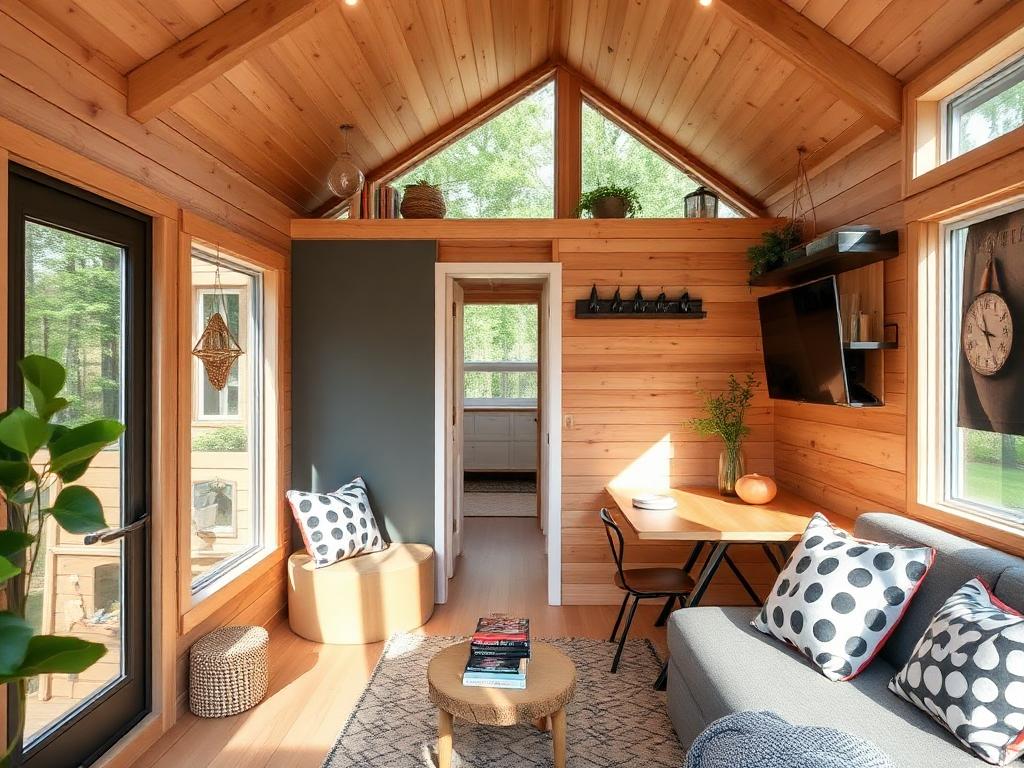Tiny home living offers a unique blend of simplicity and minimalism, appealing to many who seek a more sustainable lifestyle. However, the rainy season can pose challenges, making it essential to implement strategies for staying dry and comfortable. Rain affects the exterior of tiny homes and creates specific challenges inside. From moisture control to ensuring adequate drainage, residents must be proactive.
Assessing and Improving Your Home's Waterproofing
One of the first steps in preparing for the rainy season is reviewing your tiny home’s waterproofing. Inspect the exterior for any cracks or gaps that may allow water to seep in, paying special attention to the roof, windows, and doors. Sealant can be useful for any leaks, and it's essential to regularly check that gutters are functioning correctly. Proper drainage systems can prevent water accumulation around the foundation.
To boost your home's defenses, consider adding a waterproof barrier around the base. If unforeseen issues arise, knowing how to conduct effective flood and water damage recovery ensures your tiny home remains habitable during and after adverse weather. Ventilation should be considered, too; installing vents can significantly reduce humidity levels within your home. Remember that proactive maintenance is not just essential during the rainy season; it contributes to the long-term durability of your tiny home.
Staying Warm and Cozy
When the rain kicks in, it is easy to feel the chilly air seep into tiny homes, making warmth a priority. Consider investing in heating options that don’t take up too much space. Electric heaters can provide temporary relief during cold spells. Alternatively, wood stoves can add both heat and ambiance to your living area. Insulating windows with thermal curtains or using draft stoppers can further help retain warmth.
Cozy fabrics, such as blankets and rugs, enhance the aesthetic of your space and provide extra insulation. Opting for layered clothing can keep you comfortable without driving energy costs up. To create a warm environment, think about utilizing natural light; open blinds during breaks in the rain to allow warmth from the sun to enter.
Creating a Functional Indoor Space
With rain pouring down outside, it's essential to make the most of the limited indoor space available. Establishing designated areas for various activities within a tiny home can help create an organized environment. Create a cozy nook for reading or working, complete with adequate seating and lighting. Using multitasking furniture, such as a fold-down table or storage ottoman, optimizes the room and adds versatility.

Organizing and decluttering your space will contribute to a more relaxing atmosphere. Consider temporary storage solutions during the rainy season for outdoor gear that can accumulate, such as wet shoes or umbrellas. Styles like pegboards can be functional and visually appealing for hanging items up and out of the way.
Addressing Humidity and Mold Risks
Humidity levels rise significantly during the rainy season, increasing the risk of mold growth in tiny homes. Regularly use dehumidifiers to maintain optimal moisture levels, ideally between 30 to 50 percent. Adequately ventilate your home by opening windows when possible and using exhaust fans while cooking or showering.
In areas prone to moisture, like bathrooms and kitchens, consider using mildew-resistant paint. Regularly check hidden spaces, such as behind cabinets and under sinks, for any signs of mold growth or leaks. If discovered, immediate action is necessary—clean affected areas with mold-killing solutions and seek professional help for extensive issues.
Planning Outdoor Activities Despite Rainy Weather
While rainy weather might discourage outdoor activities, it doesn’t have to end your adventures. With the right mindset and preparation, you can still enjoy the great outdoors. Planning activities that embrace the rainy season can lead to memorable experiences. Hiking in the rain can be refreshing and peaceful.
Just ensure you pack weather-appropriate gear, including waterproof jackets and sturdy footwear. Outdoor games or cooking under shelter can create fun moments. Equip your tiny home with outdoor gear and tools that can handle wetter conditions to make impromptu excursions easier to manage. Many outdoor activities can provide a different perspective during the rainy season and allow you to appreciate nature in its serene state.
Engaging with the Tiny Home Community
Finding connection and support during the rainy season can greatly enhance the tiny living experience. Engage with local community groups or online forums where members share similar living styles. These platforms often provide information about weather preparedness and maintenance techniques specific to tiny homes.
Participate in community workshops focusing on sharing skills, such as insulation or waterproofing techniques. Networking increases opportunities for resource sharing between tiny homeowners, including borrowing tools or trading expertise. Being part of a community fosters creativity, and you may discover innovative solutions to common rainy season challenges. It’s reassuring to know you are not alone in navigating these difficulties during this wet time.
Tiny home living during the rainy season poses unique challenges, but with the right strategies, you can stay dry and comfortable. Ensuring your home's waterproofing is effective, maintaining warmth, creating functional indoor spaces, controlling humidity, planning outdoor activities, and building community support are all crucial elements.






Share: